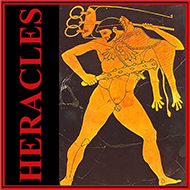Project facts
Presentation
Cultural heritage monuments and assets are facing some threats: Natural hazards (floods, earthquakes among others…) effects of temperature and moisture as well as environmental pollution (structural instability, materials degradation, corrosion and others…)
But Governmental budget constraints limit mitigation strategies. Therefore, effective management tools for cost-effective maintenance and restoration are needed.
Consequently, the HERACLES project has developped an innovative systematic approach:
1. HERACLES targets 6 neeeds following the innovation plan:
- To deal with the widespread set of worldwide CH (cultural heritage) assets
- To face climate change risks in combination with other environmental factors
- To achieve a situational awereness of the site and the embedding territory
- Assure long term preservation coupled with risk and crisis management
- To respect the integrity and improve the social-economic value of CH
- To improve research and industrial excellence in CH preservation
2. To answer those needs, HERACLES prioritizes 5 elements:
- Integrated dashboard of heterogeneous tool boxes on sensing/environmental technologies coupled with diagnosis/structural analysis
- ICT platform for situational awareness and decision support
- Innovative solutions and materials for sustainable maintenance and remediation
- Guidelines and protocols for preservation and risk management
- Methodologies for improvement of the awareness of the social and cultural value of CH
3. The project will be validated in three challenging test beds, key study cases for the climate change impact on European CH assets:
Greece, Crete, the Minoan Knossos Palace and the Venetian coastal monuments (sea fortress of “Koules”) of Heraklion.
An important sector of CH in Greece and in Europe is that on coastal area throughout the Mediterranean (cities, ports lighthouses, fortress and other monuments that face the risk of hazards from climatic change, such as significant impact from the sea.
Gubbio instead, want to represent all the historical monumental towns in Italy and in Europe, that were conceived and built in the past following criteria when the climate conditions were very different from nawadays, and that suffers at present the effects of climate changes, that would endanger their safeguard.
Impacts & Results
The integrity of monuments, historical centers and archaeological landscapes is nowadays increasingly threatened by the climatic change, the extreme meteorological phenomena and the natural hazards.
The Cultural Heritage monuments are exceptionally vulnerable to these threads while any loss of deterioration of these outstanding assets would negatively impact local and national communities, due to their cultural importance as a source of information on the past and a symbol of identity as well as for their socio-economic value.
Based on this observation, the European Commission made the call “SEC DRS11-2015: Disaster Resilience & Climate Change topic 3: Mitigating the impacts of climate change and natural hazards on cultural heritage sites, structures and artefacts” answered by HERACLES.
The main goal is to answer on a specific new challenge: Europe’s cultural heritage is being lost at an alarming rate, not only due to natural decay and human impacts but frequently also as a result of environmental changes, climatic conditions or natural hazards.
Following the call of the European Commission, HERACLES project is aim to develop eco-innovative solutions to help mitigate the effects of climate change on cultural heritage sites, structures and artefacts taking into account the values they hold for people and respecting their historic and cultural integrity. Effective adaptation strategies, systems and technologies are needed for better risk management of vulnerable heritage materials and for mitigating damage to cultural heritage assets.
Proposals may include case studies and address and research gaps or barriers needed to respond to this challenge, including aspects relating to innovative envrionmental assessment methodologies, integrated monitoring technologies ans systems, improved non-invasive and non-destructive methods of surveying and diagnosis including wide area surveillance, cost-effective conservation and restoration techniques, risk management, disaster prevention and quick damage assessment when catastrophes occur.

